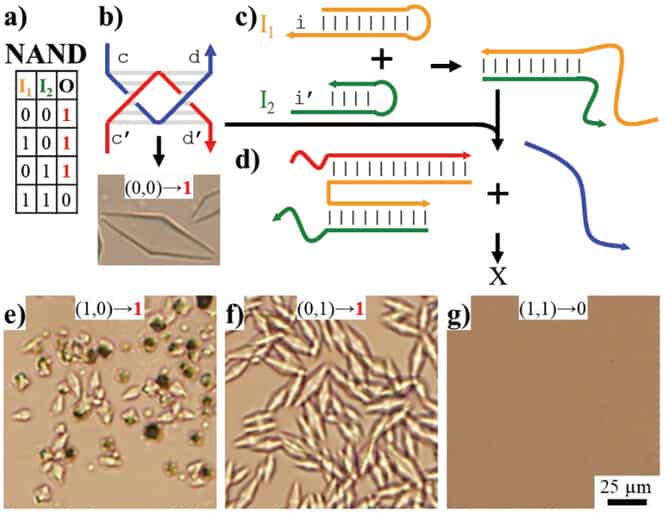
Researchers have successfully realised logic gates using DNA crystal engineering, a monumental step forward in DNA computation. Their findings were published in Advanced Materials. Using DNA double crossover-like motifs as building blocks, they constructed complex 3D crystal architectures. The logic gates were implemented in large ensembles of these 3D DNA crystals, and the outputs were visible through the formation of macroscopic crystals. This advancement could pave the way for DNA-based biosensors, offering easy readouts for various applications. The study demonstrates the power of DNA computing, capable of executing massively parallel information processing at a molecular level, while maintaining compatibility with biological systems.
- Researchers have achieved a significant breakthrough in DNA computation by realizing logic gates using DNA crystal engineering.
- Tangible visibility of the output simplifies comprehension and offers an easy readout for various applications.
- This technology holds immense potential for high-density information processing, storage, and the development of DNA-based biosensors.
The building blocks: DNA double crossover-like motifs
The DNA double crossover-like (DXL) motifs have emerged as key players in this new field of DNA computation. These motifs have the unique ability to associate with one another via a method known as sticky-end cohesion. The researchers manipulated these capabilities by encoding inputs within the ‘sticky ends’ of the motifs, thus creating a tangible representation of common logic gates.
Consider these DXL motifs as the fundamental building blocks for the logic gate system. They are the foundation upon which these complex 3D crystal architectures are constructed. The realisation of these logic gates in this manner represents a significant shift in the direction of DNA computation and crystal engineering.
Observing logic gates through macroscopic crystals
The most intriguing aspect of this study is perhaps the visibility of the logic gates. The researchers were able to observe the outputs through the formation of macroscopic crystals. This means that the results of the computations are not just theoretical, they are physically tangible. This tangible visibility of the output not only makes the process more comprehensible but also provides an easy method of readout, potentially simplifying the application of this technology in various fields.
Imagine a computer where the results of computations are not just numbers on a screen, but physical structures that can be seen and touched. This is the exciting reality that this research is pushing towards, blurring the lines between the physical and digital worlds.
Implementing various logic gates
The researchers didn’t just stop at creating a single type of logic gate. They successfully implemented several logic gates, including OR, AND, XOR, NOR, NAND, and XNOR gates, using the DXL motifs. Each of these gates interacted with the DXL motif in a unique way, modulating its ability to assemble crystals. This variety showcases the versatility and programmability of the DXL crystal system.

For instance, the NOR gate consists of an assembly DXL motif and two single-stranded DNAs (ssDNAs) as computational inputs. The input strands hybridize with the DXL motif strands, thereby destroying the DXL motif and preventing crystal formation. This gate can be utilized as a detection platform for microRNAs, where the presence of the target microRNAs inhibits crystal formation.
Applications and beyond
This research opens up numerous possibilities for high-density information processing and storage based on DNA self-assembly. The unique 3D crystal architectures that can be created using this technology could revolutionise the way we store and process information. The crystal formation also provides an easy readout of DNA computation outputs, eliminating the need for special instruments and toxic chemicals.
Moreover, the potential applications of this technology are vast. It opens doors for exploring algorithmic self-assembly in 3D space and could be used to develop DNA-based biosensors for various applications, from medical diagnostics to environmental monitoring.

